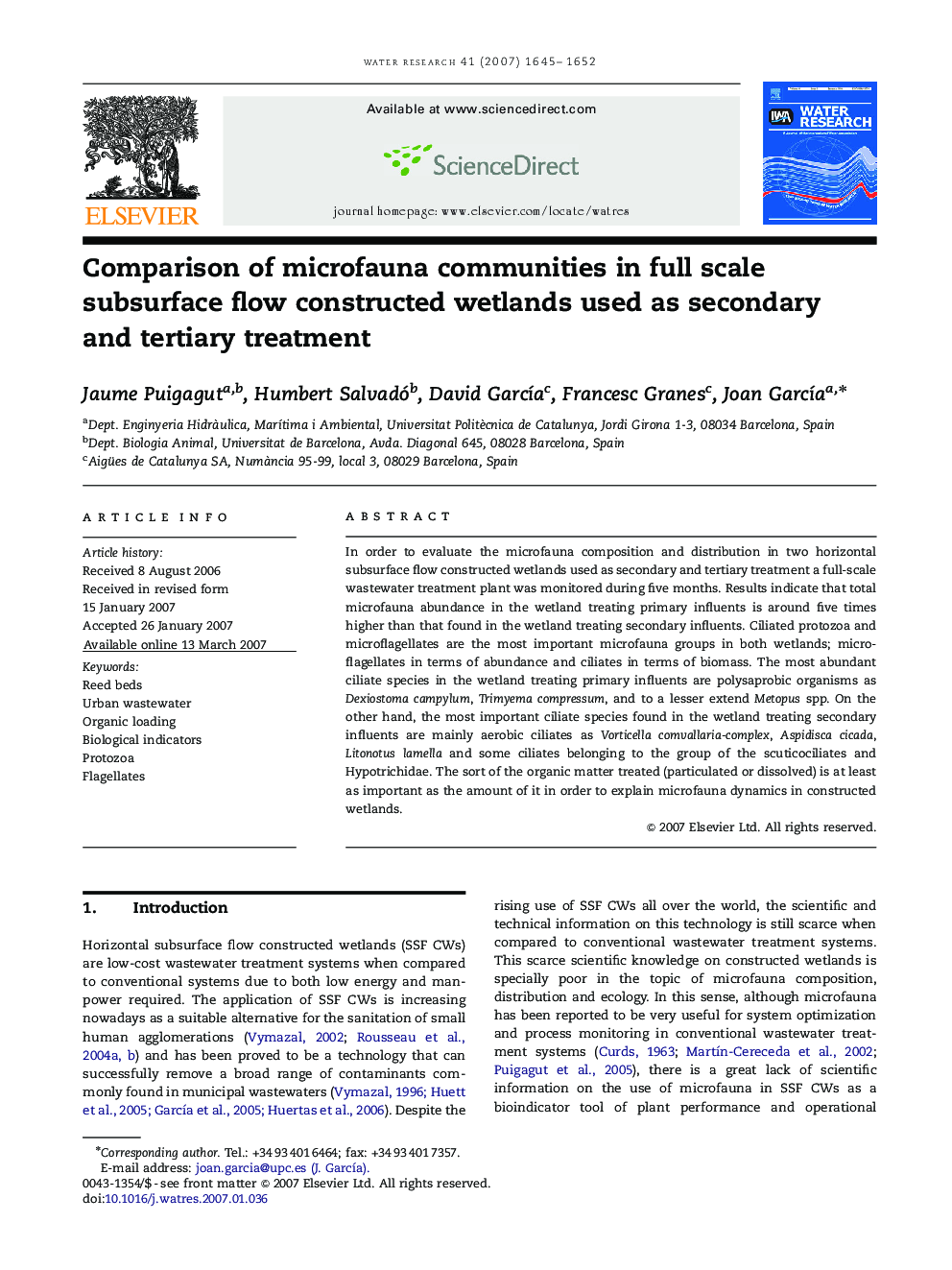| Article ID | Journal | Published Year | Pages | File Type |
|---|---|---|---|---|
| 4485308 | Water Research | 2007 | 8 Pages |
In order to evaluate the microfauna composition and distribution in two horizontal subsurface flow constructed wetlands used as secondary and tertiary treatment a full-scale wastewater treatment plant was monitored during five months. Results indicate that total microfauna abundance in the wetland treating primary influents is around five times higher than that found in the wetland treating secondary influents. Ciliated protozoa and microflagellates are the most important microfauna groups in both wetlands; microflagellates in terms of abundance and ciliates in terms of biomass. The most abundant ciliate species in the wetland treating primary influents are polysaprobic organisms as Dexiostoma campylum, Trimyema compressum, and to a lesser extend Metopus spp. On the other hand, the most important ciliate species found in the wetland treating secondary influents are mainly aerobic ciliates as Vorticella comvallaria-complex, Aspidisca cicada, Litonotus lamella and some ciliates belonging to the group of the scuticociliates and Hypotrichidae. The sort of the organic matter treated (particulated or dissolved) is at least as important as the amount of it in order to explain microfauna dynamics in constructed wetlands.
